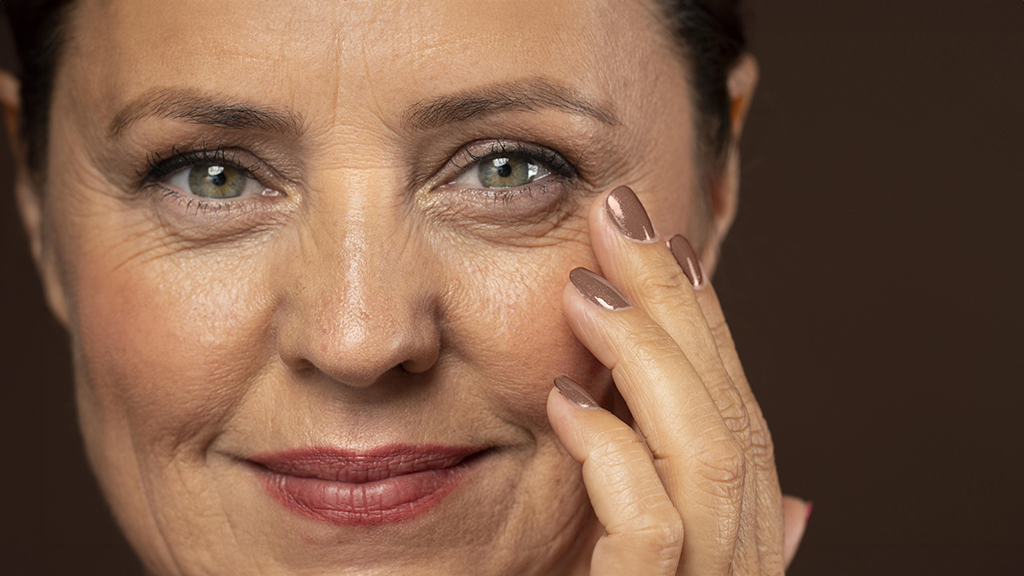Risks & Complications of Blepharoplasty
Every surgical procedure involves a certain amount of risk, and it is important that you understand the risks involved. An individual’s choice to undergo a surgical procedure is based on the comparison of the risk to potential benefit. Although the majority of patients do not experience the following complications, you should discuss each of them with your surgeon to make sure you understand the risks, potential complications, and consequences of blepharoplasty surgery.
Bleeding – It is possible, though unusual, to have a bleeding episode during or after surgery. Bleeding may occur under the skin or internally around the eyeball. Should you develop post-operative bleeding, it may require emergency treatment or surgery. Do not take any aspirin or anti-inflammatory medications for ten days before surgery, as this may contribute to a greater risk of a bleeding problem. Non-prescription “herbs” and dietary supplements can increase the risk of surgical bleeding. Hypertension (high blood pressure) that is not under good medical control may cause bleeding during or after surgery. Accumulations of blood under the eyelids may delay healing and cause scarring.
Blindness – Blindness is extremely rare after blepharoplasty. However, it can be caused by internal bleeding around the eye during or after surgery. The occurrence of this is not predictable.
Surgical anaesthesia – Both local and general anaesthesia involve risk. There is the possibility of complications, injury, and even death from all forms of surgical anaesthesia or sedation.
Infection – Infection is very rare after surgery. Should an infection occur, additional treatment including antibiotics may be necessary.
Scarring – Although good wound healing after a surgical procedure is expected, abnormal scars may occur both within the eyelid and deeper tissues. In rare cases, abnormal scars may result. Scars may be unattractive and of a different color than surrounding skin. There is the possibility of visible marks in the eyelid or small skin cysts from sutures. Additional treatments may be needed to treat scarring.
Damage to deeper structures – Deeper structures such as nerves, blood vessels, and eye muscles may be damaged during the course of surgery. The potential for this to occur varies with the type of blepharoplasty procedure performed. Injury to deeper structures may be temporary or permanent.
Dry eye problems – Permanent disorders involving decreased tear production can occur after blepharoplasty. The occurrence of this is rare and not entirely predictable. Individuals who normally have dry eyes may be advised to use special caution in considering blepharoplasty surgery.
Asymmetry – The human face and eyelid region is normally asymmetrical. There can be a variation from one side to the other following a blepharoplasty surgery.
Chronic pain – Chronic pain may occur very infrequently after blepharoplasty.
Skin disorders/skin cancer – A blepharoplasty is a surgical procedure to tighten the loose skin and deeper structures of the eyelid. Skin disorders and skin cancer may occur independently of eyelid surgery.
Ectropion – Displacement of the lower eyelid away from the eyeball is a rare complication. Further surgery may be required to correct this condition.
Corneal exposure problems – Some patients experience difficulties closing their eyelids after surgery and problems may occur in the cornea due to dryness. Should this rare complication occur, additional treatments or surgery and treatment may be necessary.
Unsatisfactory result – There is the possibility of a poor result from eyelid surgery. Surgery may result in unacceptable visible deformities, loss of function, wound disruption, and loss of sensation. You may be disappointed with the results of surgery. Infrequently, it is necessary to perform additional surgery to improve your results. Additional surgical procedures such as a browlift may be needed to correct eyebrow sagging which contributes to upper eyelid problems.
Allergic reactions – In rare cases, local allergies to tape, suture material, or topical preparations have been reported. Systemic reactions which are more serious may occur to drugs used during surgery and prescription medicines. Allergic reactions may require additional treatment.
Eyelash hair loss – Hair loss may occur in the lower eyelash area where the skin was elevated during surgery. The occurrence of this is not predictable. Hair loss may be temporary or permanent.
Delayed healing – Wound disruption or delayed wound healing is possible.
Smokers have a greater risk of skin loss and wound healing complications.
Long term effects – Subsequent alterations in eyelid appearance may occur as the result of aging, weight loss or gain, sun exposure, or other circumstances not related to eyelid surgery. Blepharoplasty surgery does not arrest the aging process or produce permanent tightening of the eyelid region. Future surgery or other treatments may be necessary to maintain the results of a blepharoplasty.
Additional Surgery Necessary
There are many variable conditions in addition to risk and potential surgical complications that may influence the long term result of eyelid surgery. Even though risks and complications occur infrequently, the risks cited are the ones that are particularly associated with blepharoplasty surgery. Other complications and risks can occur but are even more uncommon. Should complications occur, additional surgery or other treatments may be necessary. The practice of medicine and surgery is not an exact science. Although good results are expected, there is no guarantee or warranty expressed or implied, on the results that may be obtained.
Additional Advisories
Deep Venous Thrombosis, Cardiac and Pulmonary Complications: Surgery, especially longer procedures, may be associated with the formation of, or increase in, blood clots in the venous system. Pulmonary complications may occur secondarily to blood clots (pulmonary emboli), fat deposits (fat emboli) or partial collapse of the lungs after general anaesthesia. Pulmonary and fat emboli can be life threatening or fatal in some circumstances. Air travel, inactivity and other conditions may increase the incidents of blood clots travelling to the lung causing a major blood clot that may result in death. It is important to discuss with your surgeon any past history of blood clots of swollen legs that may contribute to this condition. Cardiac complications are a risk with any surgery and anesthesia, even in patients without symptoms. If you experience shortness of breath, chest pain or unusual heart beats, seek medical attention immediately. Should any of these complications occur, you might require hospitalisation and additional treatments.
Smoking, second-Hand Smoke Exposure, Nicotine Products (Patch, Gum, Nasal spray): Patients who are currently smoking, use tobacco products, or nicotine products are at a greater risk for significant surgical complications of skin dying, delay in healing and additional scarring. Individuals exposed to second hand smoke are also at potential risk for similar complications attributable to nicotine exposure. Additionally, smokers may have a significant negative effect from anaesthesia and recovery from anaesthesia, with coughing and possibly increased bleeding. Individuals who are not exposed to tobacco smoke or nicotine containing products have a significantly lower risk of this type of complication.
It is important to refrain from smoking at least six weeks before surgery and until your surgeon states it is safe to return, if desired.
Female patients information: It is important to inform your surgeon if you use birth control pills, estrogen replacement, or if you believe you may be pregnant. Many medications including antibiotics may neutralize the preventive effects of birth control pills, allowing for conception and pregnancy.
Intimate Relations after Surgery: Surgery involves coagulating of blood vessels and increased activity of any kind may open these vessels leading to a bleed or hematoma. Increased activity that increases your pulse or heart rate may cause additional bruising, swelling and the need for return to surgery and control of bleeding. It is wise to refrain from sexual activity until your surgeon states it is safe.
Medications: There are many adverse reactions that occur as the result of taking over the counter, herbal, and/or prescription medications. Be sure to check with your surgeon about any drug interactions that may exist with medication that you are already taking. If you have an adverse reaction, stop the medication immediately and call your surgeon for further instructions. If the reaction is severe, go immediately to the nearest hospital. When taking the prescribed pain medication after surgery, realize that they can affect your thought process. Do not drive, do not operate complex equipment, do not make any important decisions and do not drink any alcohol while taking these medications. Be sure to take your prescribed medication only as directed.
For details about procedures and treatments or for a consultation, advice and prices from our Dubai clinic please call +971 4 431 2396 or use our online form.


